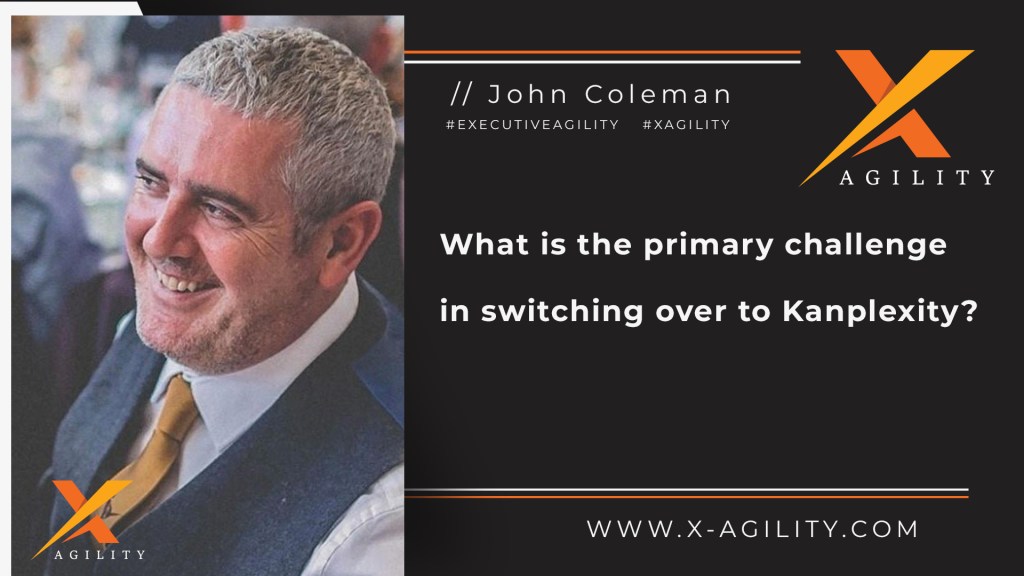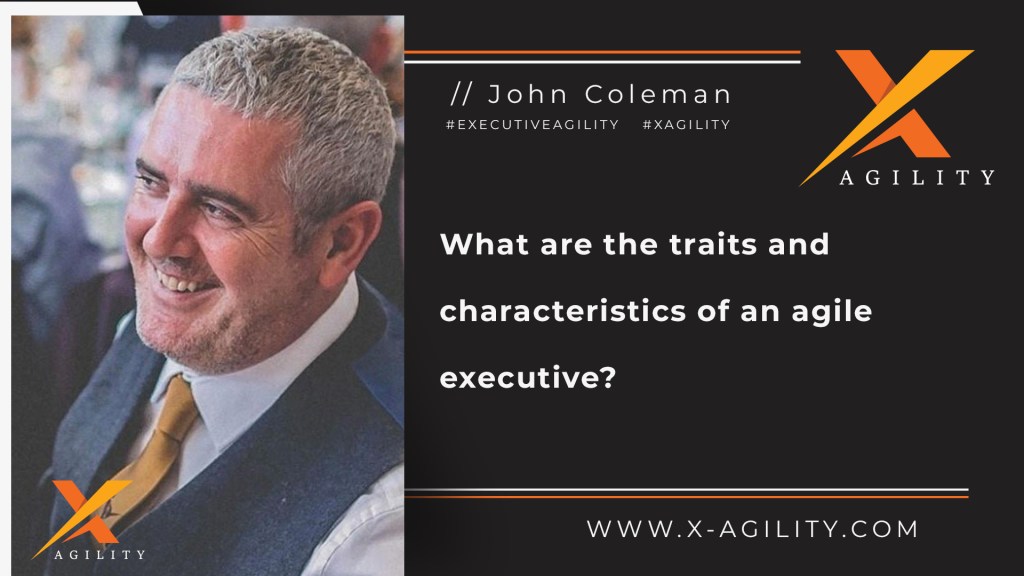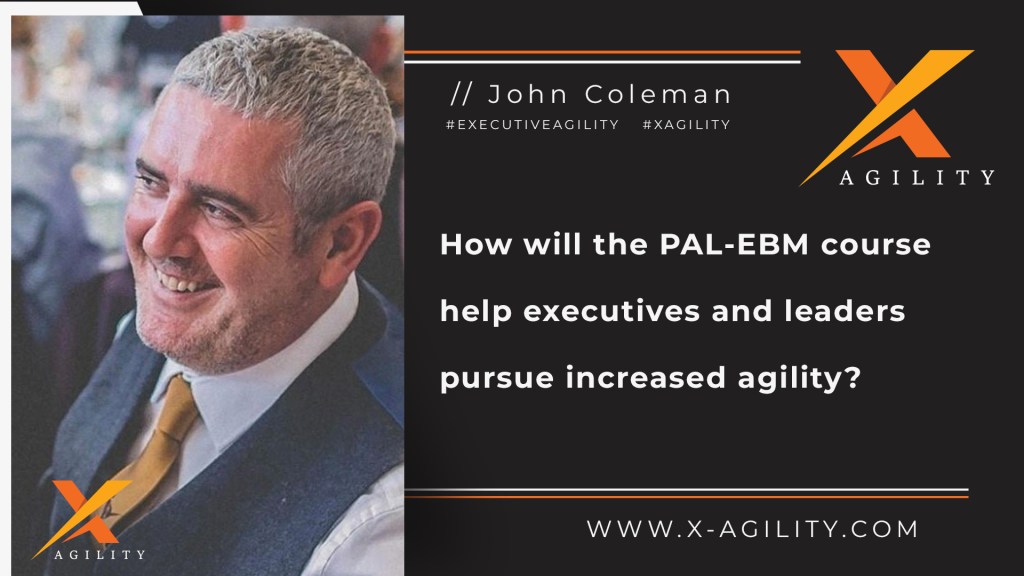Are agile executives born or do they need coaching and training?
The most agile executives I have come across, didn’t have any training. They were naturals.
There was a man I met in Malaga, only a few weeks ago, and he was just instinctively agile. This was his way of being.
- It was natural for him to be transparent.
- It was natural for him to be open and honest.
- It was natural for him to be curious about the real problems at hand.
- It was natural for him to want to collaborate with others, rather than manage.
- It was natural for him to want to help employees resolve problems.
- It was natural for him to communicate what needed to be done, and why that mattered.
And so forth.
Another great example is Matt Young, the CEO of User Voice, who I recently interviewed on the X Agility podcast. I felt he was a natural. Someone who had evolved into an executive agile.
John Carter, ex-chief engineer at BOSE, is another example of a natural leaders and someone who embodies what it means to be agile.
Executive Agility can be acquired.
To reach executive or senior leadership within a traditional organization requires a great deal of intelligence, capability, and hard work.
It doesn’t happen by default.
To succeed in a traditional organization requires a certain mindset, set of behaviours, and being great at execution. You learn what the organization rewards, and you learn what is punished.
So, succeeding in a traditional command-and-control organization requires you to excel at demonstrating the behaviours, practices, and observing the protocols outlined in systems and processes.
To be agile, or acquire executive agility, is much of the same thing.
It is simply about learning which behaviours lead to great results, and knowing which practices, processes, and interventions lead to organizational agility and agility at the team level.
You may even find that the agile values and principles resonate deeply inside of you, in opposition to the rigid rules and constraints of traditional management and project management.
The value of agile coaching and consulting
There are some executives and senior leaders who are evolving into more agile executives, but they are missing the basics, and lack a strong foundation of agility to launch from.
It isn’t natural for them to work in alignment with agile practices, processes, and behaviours.
Under pressure, they tend to revert to old habits and behaviours, and that’s where coaching and consulting come into their own. It’s my job to help the executive embed the new behaviours and practices, and to focus on creating the environment where agility can thrive and evolve.
Embed the practice(s) of Agility
It starts with embedding the practices or kata of agility.
We know what outcomes matter and we have identified agility as the best way of achieving those outcomes, it’s now simply a case of repeating behaviours, practices, and processes until they become second nature.
It can be incredibly difficult to stop repeating old habits and behaviours, and so we focus on replacing habits and behaviours. In the past, we would do X, now we focus on replacing X with Y.
Learning
Growing your knowledge and skills in the domain of agility is incredibly important.
You can work through our e-learning platform, listen to podcasts that feature other agile executives and leadership teams, and you can read articles and blogs.
Just as you learned about traditional management and project management, you will be learning a great deal more about agile and growing your own repository of knowledge through agile case studies, insight into valuable agile practices, and learning about the evolution of agile – from the early days in manufacturing to the more recent achievements in software engineering and product development.
Apply what you are learning
I find that a lot of executives and senior leaders are incredibly smart people. They intellectually grasp the concept of agility and understand the benefits of agile product development processes and practices.
The problem is embedding that learning and applying those values, principles, and practices in daily life. Actively embodying agile values and principles and demonstrating the practices that lead to increased organizational agility, can be tough.
An agility chef who is deeply skilled and experienced in cultivating agility can help show you the way, mentor you through the process, and coach you through your evolution to executive agility.
In short, help you apply what you have learned and guide you through the iterations.
Conclusion
So, yes, we do find that a lot of agile executives are naturals, but it is also a learned, practiced set of skills and behaviours that lead to executive agility.
About John Coleman
https://linktr.ee/johncolemanxagility – social and podcast links
https://linkpop.com/orderlydisruption – order training from right here
If you are interested in helping your team or organization achieve greater agility and want to explore agile training options, visit our training page.
If you value coaching and would like to work with a deeply experienced agile and executive coaching specialist, visit our coaching page.
If you are looking for an agile consultant that can help your leadership team identify an appropriate roadmap to organizational agility and take the most effective course of action in your agile transformation, visit our consulting page.
#agile #leadership #agileleadership #certifiedagileleadership #professionalagileleadership #psm #psm2 #scrum #scrumorg #xagility #executiveagility #xagility





